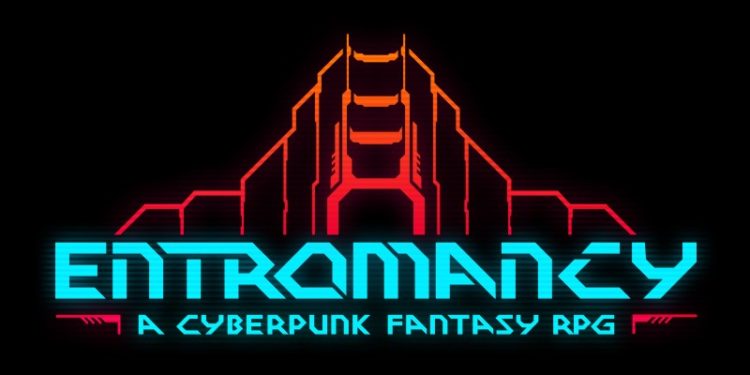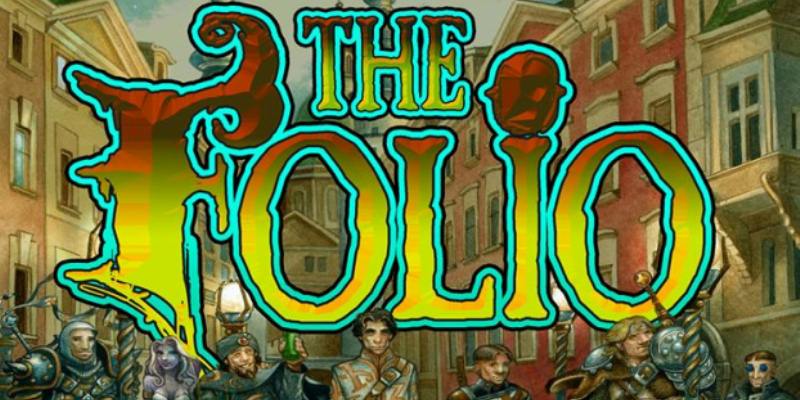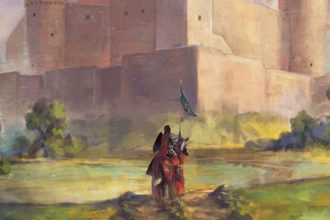Entromancy: A Cyberpunk Fantasy Game (and Interview)

M. S. Farzan is the creator of Entromancy: A Cyberpunk Fantasy Roleplaying Game, currently funded and knocking out stretch goals on Kickstarter. In this interview, he introduces us to the world, the people, and the rules of Entromancy.
Entromancy is a tabletop roleplaying game set in San Francisco in the late 21st century. In our world, a quarter of the earth’s power now runs on ceridium, a newly discovered element that has had the unintended consequence of spawning a new race of people, and several forms of magic that were once thought to have been forgotten.
In Entromancy, you’ll take the role of a character in a futuristic, technology-driven, magic-rich world complete with espionage, spellcasting, hacking, and engaging action sequences.
The core system of Entromancy is based on the world’s most popular roleplaying game, and will allow you to choose from five diverse races and five unique classes to create your character and begin your story. You’ll progress your character by taking on challenging missions and eventually embracing one of the game’s five brutally powerful destinies, which are like prestige classes.
Want to stealth hack your way into enemy territory as a Vanguard, enhancing your faction standing with the underrace nation of Aurichome? You can do that. Interested in putting together a crew of NIGHT Agents to clean out San Francisco’s Presidio of zombie-like ragers? We’ve got you covered. Striving to climb the ranks of the Unaligned so that you can unlock the ferociously powerful, chaos-based magic of the Entromancer? No one’s stopping you…other than the other two power hungry factions standing in your way.
BRANDES: First off, what does your background in gaming look like? I see that you have a significant history on the video gaming side of the fence as well!
M. S. FARZAN: I’m a long-time tabletop gamer and GM! I entered the TTRPG world as many do, playing Dungeons & Dragons with a group that has become my inner circle of friends. Over the years, we’ve branched out to other systems like Star Wars Saga Edition, GURPS, Shadowrun, and a whole host of board games, but we still play D&D regularly.
I’m also a big TCG fan and yes – I’ve worked in the video games industry for quite some time! I’m a former community manager for games like Dungeons & Dragons Neverwinter and Mass Effect: Andromeda. Two of my favorite games are The Legend of Zelda: A Link to the Past and Baldur’s Gate II: Shadows of Amn.
I have a big time D&D fiction addiction too, particularly when it comes to Forgotten Realms content. I recently did a quick count and found that I’ve read 99 D&D-related novels so far, and am currently on #100!
B: A whole lot of fans of D&D 5e read Tribality, and I understand that Entromancy is closely based on 5e’s mechanics. What are some of the changes you made to suit the needs of cyberpunk?
M. S. FARZAN: We love 5th Edition and think it’s an incredible system. It serves as a wonderful springboard for our design philosophy, which is based on the three pillars of accessibility, cyberpunk worldbuilding, and a focus on engaging action and roleplaying.
For starters, we’ve streamlined some of the traditional systems that you’d find in a 5E or d20-based game, while building out others to suit the needs of a cyberpunk setting. For example, adventuring in Entromancy is mission-based, enabling a milestone experience system that makes character advancement much easier than having to keep track of XP. At the same time, we’ve built a slottable cybernetics system that’s pretty intuitive (and powerful), as well as other game systems that support the coexistence of magic and technology.
Additionally, we have a card-based, collaborative hacking minigame in the works that’s currently a stretch goal! The Entromancy ruleset already features a hacking system that draws upon skill checks, but we want to up the ante and offer a completely new way to engage in hacking that involves all tech-heads at the table and is playable in under a minute.
B: What kinds of new things are you doing with character classes and class features as characters advance?
M. S. FARZAN: There are five base classes in Entromancy, and we think they’re pretty fun and diverse! More info about them is available on the Kickstarter page, but suffice it to say that each class, which is unique in its own right, has two archetypes to specialize in when you start playing. So if you pick Revolutionary as your character’s class, you can either choose to play as a dual pistol-toting Gunslinger or a ranged specialist Sharpshooter. We have pre-made characters with assigned stats if you just want to get in the game and start playing, as well as character creation rules if you prefer to build your own.
Once you’ve picked your class and archetype, you get to choose one feat and two spells or talents from your class list, and you’re ready to take on your first mission!
Character advancement is likewise pretty easy to navigate. Each time you successfully complete a mission, you get to add another feat or spell/talent to your repertoire. At certain milestones, you also get to select more advanced gear, cybernetics, faction-specific equipment, and so on. After successfully completing five missions, your character gets to embrace their destiny, which is our version of a prestige class!
B: Prestige classes. Prestige classes! Prestige classes? I’m dying to know what you’re doing with these!
M. S. FARZAN: Our prestige classes are called “destinies,” and they’re brutal! There are some brief descriptions on the Kickstarter page that provide more info about destinies, and they serve as a new layer of advancement – and awesomeness – for your character after they’ve successfully completed five or more missions. Some of them, like the Infiltrator, enhance your character’s utility and effectiveness, while others, like the Entromancer, offer new dimensions of magic and power.
B: What are some of the core conflicts of the Entromancy setting? What kinds of stories can we tell here that no other setting offers?
M. S. FARZAN: At the core of Entromancy are several conflicts that stem from the overpopulated city centers that exist in the late 21st century and the three factions that seek to control them. In our world, a quarter of the earth’s power now runs on ceridium, a newly discovered element that has had the unintended consequence of spawning a new race of people, and several forms of magic that were once thought to have been forgotten. Due to several decades of population explosion, many of these new communities have been forced underground, and are collectively known as “underraces.” Whereas ceridium powers technology ranging from antigravity “boostered” vehicles to advanced weaponry, it also serves as the catalyst for powerful schools of spellcasting, collectively known as “mancy.”
The faction of NIGHT – the National Intelligence Guard of Human Technology – is a paramilitary force that has been developed to facilitate relations between humans and the underraces, sometimes with extreme measures. Its opposing faction, Aurichome, is a sovereign nation united under the banner of King Thog’run II, who himself coined a more empowering moniker for the underraces, “aurics.” Completing the triangle of factions are the Unaligned, whose objectives are their own.
The Entromancy setting provides all kinds of opportunities for conflict and roleplaying between the races, factions, and players themselves. Some of these opportunities are built into mission objectives and the game’s faction system, and there’s a ton of room for others to arise organically. What’s evident is the struggle between the three factions and their adherents in a world that is shaped by its interdependence on technology, mancy, and ceridium.
B: Can you tell us about some of the games, books, and movies that most inspired Entromancy’s world, characters, and aesthetics?
M. S. FARZAN: I’d love to be able to describe Entromancy simply by mentioning Neuromancer and The Dresden Files in the same sentence. I wrote the first book in The Nightpath Trilogy with those two novels on my mind! William Gibson’s dystopian, tech-forward world and Jim Butcher’s devil-may-care urban fantasy factor strongly into the world and aesthetic of Entromancy.
I’m a big fan of isometric RPGs and action RPGs like Shadowrun Returns, Diablo, and Torchlight, and these video games influence some of the design direction of Entromancy when it comes to identifying character archetypes and progression. I’d also be remiss if I didn’t mention cyberpunk (and cyberpunk-adjacent) films like The Matrix, Blade Runner, and Tron for some of our inspiration, although we err more on the side of urban fantasy than straight up technological dystopia.
Many thanks to M. S. Farzan for this interview, and good luck with the Kickstarter!



